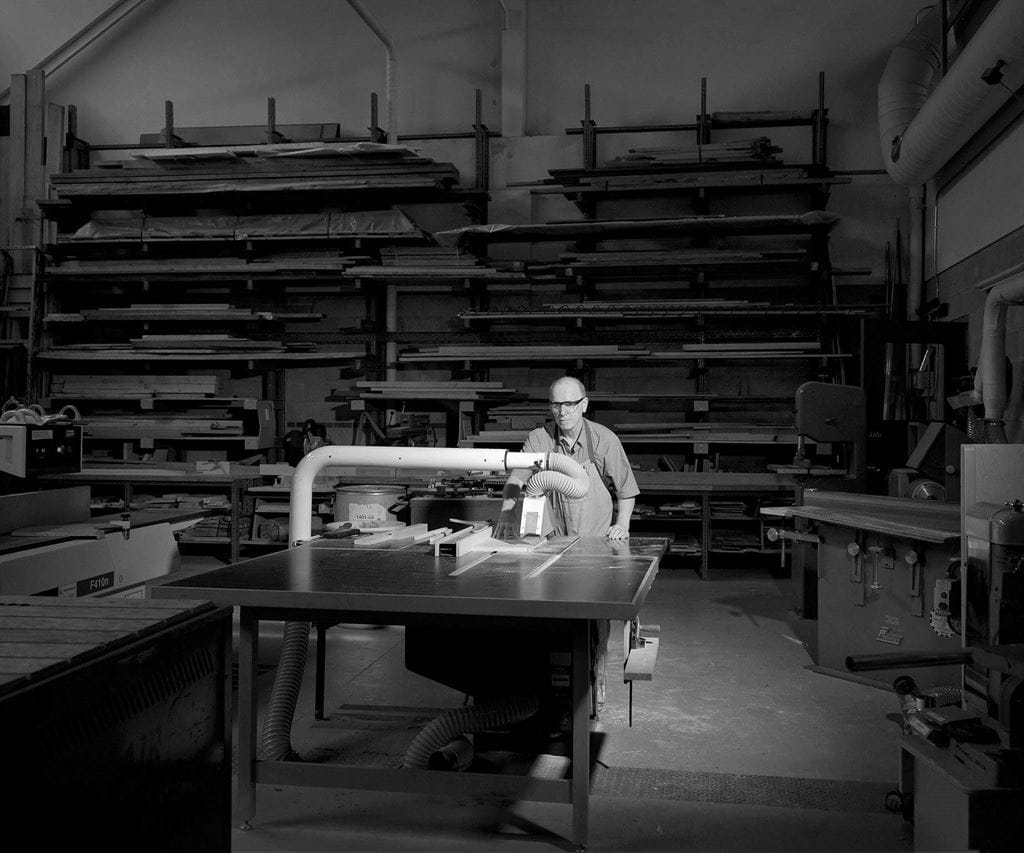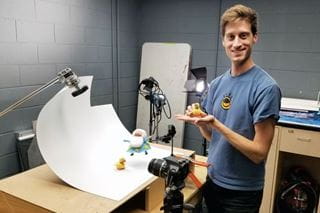
Crafting a legacy
 by Susan Atkinson – Aug 19, 2014
by Susan Atkinson – Aug 19, 2014 Anyone who has visited the Furniture Studio’s annual graduate exhibit will have marveled at the exquisite craftsmanship and individual creativity on display. In an era of mass production and cheap imports, it’s rare to find the kind of dedication to art and design quality that resides within the Furniture program’s studio spaces.
No one exemplifies that commitment more than Rob Diemert, who has served as the program’s technologist since 1995. Rob’s history with Sheridan goes back much further, as he graduated from the Furniture program back in 1983, when it was housed at the former Lorne Park campus in Mississauga. After graduating, he operated his own studio for more than ten years, designing and building custom furniture on commission.
As the studio’s technologist, Rob oversees and maintains all of the equipment used in the studio, and also orders and dispenses the raw materials used in furniture construction. More importantly, he serves as a mentor and guide to the 50 students enrolled across the three years of the Furniture program (which transitions to a four-year program with the introduction of the Bachelor of Craft and Design this fall).
“Woodworking presents constant challenges, and there’s lots of trial and error. It’s one thing to be lectured to about how things work, but it’s the hands-on practice that really teaches students how it all fits together,” he says. As the full-time technologist in a program where many faculty are part-time, Rob is a stable presence in the machine room (where the construction of pieces takes place), providing advice and support on design issues such as determining the best type of joint for a table, or demonstrating how to operate a piece of equipment.
“Rather than dictate the solution to students, I try to tease it out of them. Keeping it fun is key” – Rob Diemert
“The machine doesn’t do it all for you,” he says, noting that problem-solving is a big part of the design process. “Rather than dictate the solution to students, I try to tease it out of them. Keeping it fun is key.”
Advances in technology have had an inevitable impact on the age-old craft of furniture design. “Things have changed since I was a student. The emphasis has shifted away from skilled handwork, to focus more on concept and design development, and producing goods on a more economical scale.” Rob sees many of the changes as positive – for instance, students now have access to 3D printers to test out design concepts – this can really streamline the process and prevent missteps.
After nearly 20 years in his position, Rob’s love of furniture design and interest in helping students keeps him motivated. “It’s the students we attract that make this program stand out, and it’s great to watch them progressing through the program to become really good designers.”
Pictured at top of page: Rob Diemert, Sheridan Furniture Technologist. Photo by Photography Technologist Owen Colborne.
Written by: Susan Atkinson, (retired) Director, Communications at Sheridan.
Media Contact
For media inquiries, contact Sheridan’s Communications and Public Relations team.



